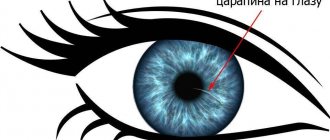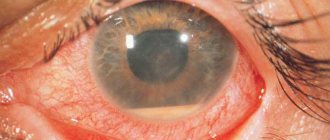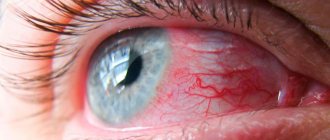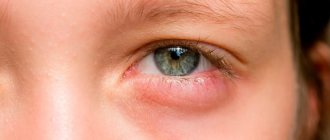- Symptoms
- How to distinguish viral sinusitis from bacterial?
- How to understand on your own?
- Forms of the disease
- Treatment
- Precautionary measures
- When can you not be treated at home?
- Prevention measures
- Recommendations
Sinusitis is inflammation of the mucous membrane of the maxillary sinuses. Excess mucus forms in them, the outflow of which worsens. The disease can be caused by a bacterial, viral or fungal infection, or an allergen. The pathology can develop against the background of rhinitis, scarlet fever, inflammation of the adenoids, polyps, untreated colds, and a deformed nasal septum. If left untreated, the pathological process affects connective, bone and vascular tissue and causes complications.
Symptoms
The disease manifests itself with symptoms, including:
- headache;
- soreness in the cheeks, forehead;
- a feeling of heaviness and fullness in the area of the bridge of the nose and upper teeth;
- bad breath;
- deterioration in general health;
- nasal voice;
- decreased sense of smell;
- difficulty in nasal breathing.
The main symptom is profuse mucous and purulent discharge from the nasal passages. As the disease worsens, the temperature rises.
Types of sinusitis
In practice, based on the pattern of morphological changes, the following types of sinusitis are distinguished:
- purulent;
- catarrhal, in which swelling predominates and there is no pus;
- allergic (inflammation caused by an allergen);
- hyperplastic (the nasal mucosa and cysts grow and at the same time the sinus cavity and the diameter of the outlet narrows);
- atrophic (the activity of the mucous glands is disrupted, which leads to a decrease or complete cessation of mucus production, and subsequently to dryness of the mucous membrane);
- polypous (the mucous membrane changes and grows, forming polyps - soft-tissue, multiple formations that look like a bunch of grapes. If there are a large number of polyps from the maxillary sinus, they can “fall out” into the nasal cavity through the outlet, which significantly complicates nasal breathing);
- odontogenic, associated with untreated diseases of the teeth of the upper jaw;
- mixed (a combination of different forms of sinusitis).
How to distinguish viral sinusitis from bacterial?
To select the correct treatment, it is necessary to determine the causative agent of the disease. These may be pathogenic microbes or a viral infection. The most effective way to diagnose is to consult an otolaryngologist. The doctor will collect anamnesis and conduct the necessary examinations.
To identify bacterial sinusitis, a nasal culture is performed. This analysis of the composition of the microflora will reveal what caused the inflammation. If a virus is suspected, the patient is given a general blood test. Computed tomography or x-ray of the paranasal sinuses will help determine the source of pathology and concomitant diseases. To assess the condition of the nasal passages, rhinoscopy is prescribed.
According to statistics, the majority of cases of the disease are caused by a viral infection. Bacterial microflora joins later, on the 4-5th day of illness. Viral sinusitis has symptoms similar to a common cold and lasts an average of a week. Most often, the disease is mild. If a bacterial factor is involved, the symptoms change:
- The discharge takes on a yellowish-green tint and becomes more abundant.
- A feeling of fullness appears in the nasal sinuses.
- There is soreness around the nose and eyes.
Symptoms of sinusitis
Symptoms, that is, clinical manifestations of sinusitis, are associated with impaired nasal breathing, pressure of pus on the walls of the sinus and adjacent tissues, and general intoxication of the body. Main symptoms:
- unpleasant sensations in the nasal cavity, a feeling of pressure in the bridge of the nose, later - pulling, pressing pain under the eyes and in the cheek area;
- pain, as a rule, is practically not noticeable in the morning, but intensifies noticeably in the evening;
- sometimes pain in the maxillary sinus is mistaken for toothache, due to the close anatomical location of the maxillary sinus and the teeth of the upper jaw;
- difficulty breathing through the nose, nasal congestion and nasal voice, usually on the side of inflammation;
- decrease or complete loss of sense of smell;
- swelling of the lower (less often upper) eyelid and cheek on the side of inflammation;
- nasal discharge, yellow or green in color, with an unpleasant odor;
- abrasions and cracks in the skin (nasal vestibule) at the entrance to the nasal cavity, with strong discharge of mucus and pus from the nasal cavity;
- increased body temperature to 38 degrees or higher, with the possibility of chills. When the process is chronic (chronic sinusitis), there is either no rise in temperature, or it rises to 37.1-37.5 degrees;
- general weakness and malaise of the body, poor sleep and lack of appetite, rapid fatigue, decreased performance.
Read also: Questions and answers on the topic - Treatment of nasal diseases
How to understand on your own?
Sinusitis has extensive symptoms, which in many ways are similar to other respiratory diseases. Only a doctor can make a final diagnosis based on the results of the examination.
If signs of sinus inflammation do not disappear after 10 days or more, the patient most likely has a bacterial infection. Most often, the disease occurs as a complication after a cold.
With viral sinusitis, symptoms increase over several days. By the end of the first week, as a rule, the condition improves. A mild form of the disease can go away on its own if a person regularly clears the nasal cavity of mucus, takes warm drinks, and supports the immune system with vitamins.
Sometimes sinusitis is viral in nature, but lasts longer than ten days and manifests itself with numerous relapses. Symptoms of inflammation appear and disappear.
Forms of the disease
According to the nature of the course, acute and chronic sinusitis are distinguished. In its acute form, inflammation manifests itself with pronounced symptoms and causes serious discomfort due to temperature, deterioration of well-being, and decreased performance.
If the patient ignores the alarming symptoms and does not take any measures, the disease can become chronic. Signs of inflammation in the maxillary sinuses persist constantly and are detected using hardware diagnostics. Bone and submucosal tissues are involved in the pathological process; they thicken, which is caused by fibrosis. A focus of chronic inflammation can lead to the formation of polyps or cysts. These tumors are treated surgically.
With chronic sinusitis, the quality of life deteriorates. Patients complain of headaches, decreased sense of smell, and nasal discharge. Due to difficulty with nasal breathing, a person’s voice changes and a characteristic nasal sound appears. In the cold season, with the onset of cold season, the disease manifests itself with exacerbations, during which the symptoms become more pronounced.
During exacerbations of the disease, various complications can occur. Inflammation spreads to nearby organs and tissues. In patients with exacerbation of chronic sinusitis, otitis media, pharyngitis, and tonsillitis can be diagnosed. Severe pain indicates damage to the trigeminal nerve. In severe cases, intracranial complications occur: meningitis, brain abscess.
Chronic sinusitis
Chronic sinusitis is diagnosed if the inflammatory process in the maxillary sinuses continues for more than 4 weeks. In the chronic form of the disease, periods of relatively good health are followed by exacerbations, when the symptoms of sinusitis appear again.
Between exacerbations, the symptoms of sinusitis are usually mild. The temperature, as a rule, does not rise or rises slightly - up to 37−37.5 °C. The most indicative symptom of chronic sinusitis is attacks of dry night cough, which does not respond to traditional treatment. A cough is caused by phlegm running down the back of the throat.
Chronic sinusitis is very difficult to completely cure. Therefore, if you get sinusitis, you should immediately consult a doctor before the disease becomes chronic.
Treatment
The disease, in the absence of complications, is treated on an outpatient basis. For a bacterial infection, the patient is prescribed antibiotics, and for viral sinusitis, antiviral drugs. If sinusitis is caused by an allergen, antihistamines are needed. In some cases, a fungus becomes the culprit of the inflammatory process. Fungal sinusitis is a type of allergic sinusitis and occurs when fungal spores get on the mucous membranes of the nose. Antifungal drugs are used to treat the pathology.
You should know that antibiotics can only cure bacterial sinusitis, which is caused by streptococci and staphylococci. Antibiotics have no effect on viruses, fungi and allergens.
Thus, the success of therapy is possible only with a clear understanding of the cause of inflammation.
To alleviate the condition of sinusitis, medications are prescribed to thin the mucus, which improves its flow from the nose. To relieve congestion, sprays and drops are used that constrict blood vessels.
At home, the nose is washed with antiseptic and saline solutions and inhalations are performed. To rinse the sinuses in a medical facility, YAMIK catheters and the “cuckoo” procedure are used. In difficult cases, a puncture is prescribed to remove purulent contents.
Treatment of sinusitis in adults
Treatment of inflammation of the maxillary sinuses requires an integrated approach. Patients are prescribed symptomatic and etiological therapy. The main therapeutic measures in the fight against infectious and inflammatory pathology are:
- Medicines. Local and systemic preparations in the form of spray, drops, solution and tablets are indicated. Patients are prescribed antibiotics, antiseptics, vasoconstrictor medications and saline solutions to flush the sinuses from purulent contents. Anti-inflammatory, antihistamine medications and vitamins are also used. It is recommended to take all medications strictly as prescribed by a specialist, adhering to the course and dosage.
- Physiotherapeutic methods. They help ease breathing, improve the outflow of purulent discharge and suppress the inflammatory process. UHF and UV are effective. Such manipulations are prescribed only during the period of remission.
- Surgical intervention. When conservative methods become ineffective, surgery is resorted to. Patients undergo puncture of the affected sinus to eliminate pathological secretions and rinse the nasal cavity with antibacterial and antiseptic agents. The operation is performed under local anesthesia in several stages.
Precautionary measures
Self-medication for sinusitis can be harmful and even life-threatening. This primarily concerns drug abuse. Uncontrolled use of antibiotics can cause serious disorders of the gastrointestinal tract, heart, kidneys and liver, and lead to allergies. In difficult cases, severe intoxication occurs, requiring hospitalization.
Pregnant women, children, elderly patients, and people with allergies should be careful when taking any medications.
Abuse of drops to constrict blood vessels leads to drug dependence. A person is forced to constantly put drops into his nose, otherwise it is impossible to breathe. This provokes inflammation of the mucous membrane - drug-induced rhinitis.
Using steam inhalations and warming your nose for purulent sinusitis is fraught with complications. Heating will accelerate the growth of bacteria and the spread of purulent contents. Heating is also contraindicated at high temperatures, a tendency to nosebleeds, and heart disease. In this case, you should limit yourself to washing the nasal sinuses with saline and antiseptic solutions, and cold inhalations.
When can you not be treated at home?
Most cases of sinusitis are treated at home. Exceptions are situations where the disease has led to complications that are fraught with deterioration of health and pose a threat to life. We are talking about situations when the infection spreads to bone tissue and the brain area. If symptoms increase, a sharp deterioration in health, or an increase in temperature, urgent medical attention and hospitalization will be required.
Acute sinusitis in children is most often treated in a hospital. To relieve inflammation, antibiotic injections and physiotherapeutic procedures are prescribed. This is necessary to prevent the disease from becoming chronic.
If a patient is diagnosed with a sinus cyst or polyps, surgical treatment is necessary. The same applies to advanced cases of chronic sinusitis, in which a puncture is prescribed to pump out pus from the maxillary sinuses. It is also called a puncture. The patient will have to spend about a week in the hospital, after which he will be sent to home rehabilitation.
Hospitalization may also be required for odontogenic sinusitis, when an infection from a diseased tooth penetrates into the nasal sinus. In some cases, surgical treatment is indicated.
Treatment of sinusitis in adults at home
To combat inflammation of the paranasal sinuses, not only traditional therapy, but also traditional medicine is effective. It includes safe recipes for relieving symptoms and causes of sinusitis. Various oral agents and solutions for irrigation of the nasal cavity are used.
At home, you can use the following folk methods:
- Berry tincture. Take fresh fruits of sea buckthorn, rose hips and viburnum, 1 cup each, and pass through a blender. Mix the resulting thing with 0.5 liters of honey and leave overnight in a cool place. Then add 500 ml of vodka, wrap it well and let it brew for a week. Take the product before meals three times a day, 1 tablespoon.
- Drops. For preparation, use 1 teaspoon of calendula and chamomile. Dry herbs are poured with a glass of water and boiled over heat for 5-10 minutes. The broth is cooled and filtered. Used in the form of drops 3-4 times a day to reduce the inflammatory process.
- Infusion to strengthen the body's protective functions. To prepare a healing remedy, take viburnum bark, St. John's wort and nettle in a ratio of 2:1:1. The dry mixture in an amount of 2 g is poured with 200 ml of boiling water and left for 40-50 minutes. Then pass through a sieve and take orally in 2 times.
Prevention measures
Sinusitis affects people of any gender and age. To minimize risks, you should monitor your health, strengthen your immune system, and avoid hypothermia. The disease most often occurs as a complication after colds and flu, so their treatment should be given due attention. The health of the respiratory system is positively influenced by walks through a coniferous forest, sea air, and preventive rinsing of the nose with sea water.
The high-risk group includes people with a deformed nasal septum, inflammation of the adenoids, diseases of the teeth and gums, allergy sufferers, smokers, and workers in hazardous industries. To prevent the disease, it is necessary to eliminate, if possible, those causes that can provoke the inflammatory process.











